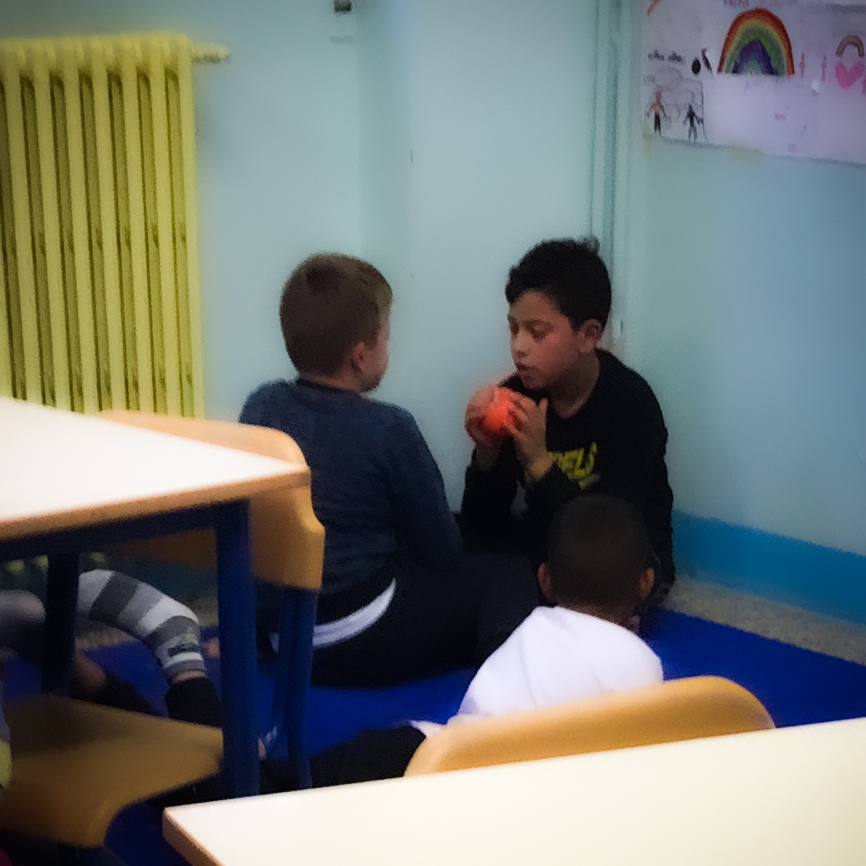By Sandra Intrieri (Primary school teacher – Italy)
I am a Primary School teacher in Piacenza. In 2015, I started teaching and I heard the news about the Litigare Bene method. I needed it because, for 2 years, when the children came to me asking for intervention in their conflicts, I replied: “I’m not a judge nor a policeman, sort it out by yourself”. I understood that it was not useful for them. They needed help in their quarreling and my response was confusing them. Therefore, I joined a CPP course about Daniele Novara’s Litigare Bene method. When I proposed it to the children, during the last months of the first grade, I was not initially convinced but then I saw their curious and happy faces: I was giving them, at last, a “solution”, a method! Their first reaction prompted me to continue. I understood that I had to be more confident and, at the beginning of second grade, I talked about it with my colleagues. We asked the CPP’s pedagogue Marta Versiglia for a presentation and decided to talk to the children about the method, but only in the class where I worked for 15 hours weekly, not in the one where I worked for 5 hours only. During a class assembly, we asked children about this new way of arguing in the Conflict Corner. Many children had already had positive experiences, but someone was silent, disagreeing because their classmates “wanted to talk”…
The majority of children agreed and we decided to apply it officially, informing the parents and letting the children choose a space and preparing it as a “Conflict Corner”, with a billboard designed by them with advice. We chose not to interfere with the children’s stories about their versions, emotions, clarifications, and agreements, but to give them permission to take the time needed to talk to each other in the moment of difficulty until they found a new balance. Over the following 4 years, new teachers arrived in the class and I stayed. We keep continuing with the Litigare Bene method until the end of the Primary school cycle. I also decided to change some details of the method to allow a child with selective mutism to be able to use the Conflict corner, too.
In the class, where I only taught for five hours a week, I started alone with the method and I always continued to invite the children to “argue well”, but my colleagues never applied it. At the end of the last year of primary school, I realized that the children who applied the method were more emotionally competent, while the others had not evolved well in managing their own emotions. I felt frustrated when I was in the class without the method, even though I always tried to use it, children kept looking for my help when they argued. They knew my answer: “Talk about it among yourselves”, but I understood that there was no evolution in their managing their relationships. I often did activities about emotional literacy, but this was not enough. I observed a big difference between the two classes at the end of the fifth grade: the children “without a method” were very melancholy, sad, and afraid at the thought of the change of school order, on the last day they cried silently and inconsolably for an hour. The students of the other class wanted to “stage” the salient moments of the 5 years they spent together, the Litigare bene method included. They wanted to talk a lot about their emotions, about how they dealt with that change. On the last day of Primary school, they celebrated by expressing their emotion and melancholy with hugs and words.
These observations made me think a lot. Applying this method has helped the children to create an inclusive sense of the team. All the children, in their evolutionary path and each with their differences and peculiarities, have shown great improvements, even those who did not like being “pulled into” the Conflict corner by schoolmates. All of them proved to have grown up and matured both in the management of conflicts and emotions. Now they are in Secondary school in three different classes and all behave without problems. This made me think that the chance they were given of a place where they “pull out” their thoughts with words, without shame, has made them mature to better face conflicts.
I made some photos and video interviews with some kids from the class who applied the method. They have many memories of their arguing in the Conflict Corner and they are confident in their own skills in arguing well. One of them was chosen by the new schoolmates for a sort of “mediator” role in quarrels. I tried to ask some kids from the other class, but they have nothing to share about their arguing at school. The subject of “quarrels” is a difficult one for them. The interviews done with Tommaso, Ahmed, and Andrea and the news I have of all the kids in those classes confirm what I thought. You will find it in the “Arguing at school” Map Genially.
Photo ©Sandra Intrieri


